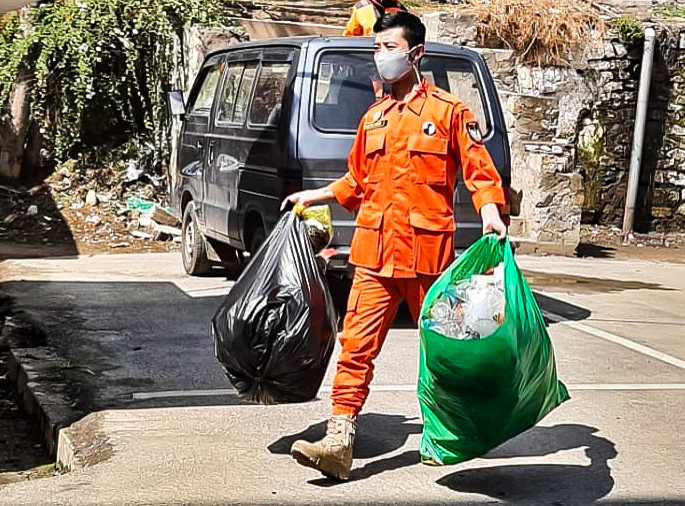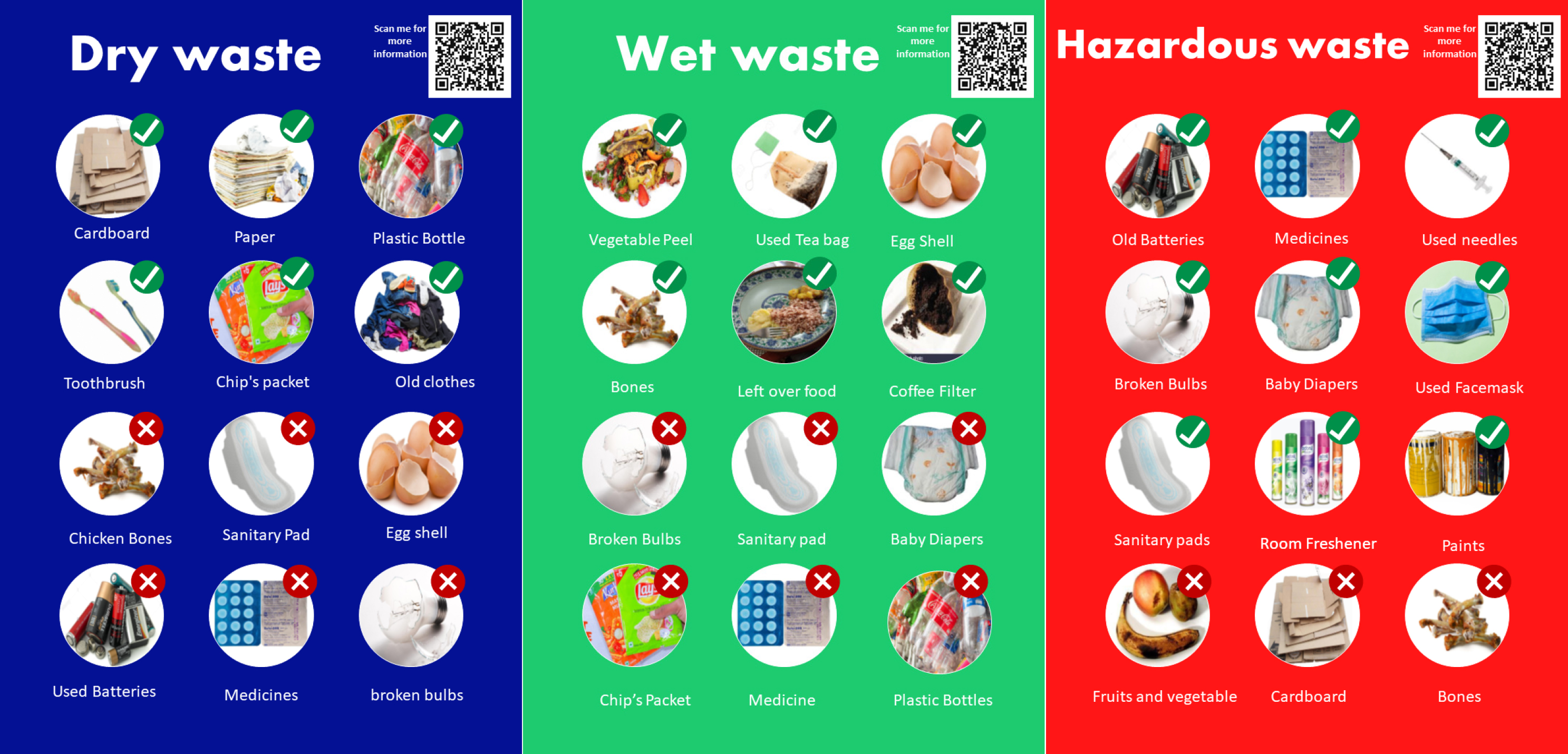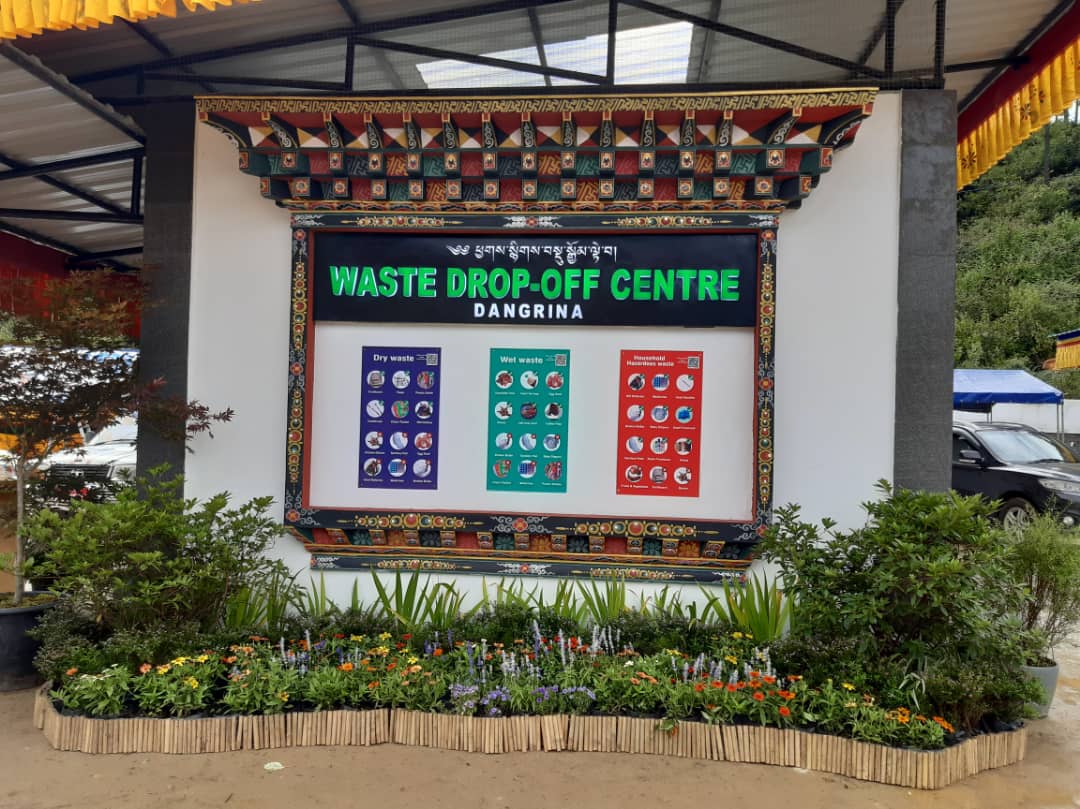Right intervention encourages behavior change in waste segregation

A volunteer collecting segregated household waste during the trial
The increasing waste is a growing concern for Bhutan and despite the challenges, it has committed to achieve zero waste by 2030.
As part of a month-long experimentation on waste segregation behavior using three colored bins with information and feedback (exploratory research), it was established that the right environment encourages people to change behavior. The trial also validated that waste management is a systemic issue.
Personally, for us, through this journey we’ve realized that the goal can be overwhelming for people like us who do not have a zero-waste mindset, but it is not impossible. Also, the government’s effort to curb waste issues through waste flagship would not be successful if there is no sense of responsibility from people towards this commitment.
Bhutanese are accustomed to segregating waste into wet and dry waste at home. The challenge to introduce an additional waste stream to the household piqued our interest and we were eager to test the effect of three colored bins on household behavior towards quality segregation of waste. Our interest and eagerness doubled when we decided to conduct a Randomized Control Trial (RCT) as our methodology for our very first experiment.
We had to literally collect waste from 600 households, unpack it, dig through it, weigh waste to understand a pattern of the household behavior in quality waste segregation. We came across unwrapped baby and adult diapers, sanitary pads, decomposing kitchen waste while sorting through waste. The data collection was a rigorous process. The whole journey was a learning for newly established Accelerator Lab and has had substantial impact on how we approach other trails moving forward.

The experiment used RCT to test if providing the three colored bins with information (RED, GREEN, BLUE) would encourage people to segregate or not. The whole experience of conducting an RCT for the first time was exhilarating as well as challenging, however, the anticipation that the team had for the results overshadowed the challenges.
Following issues were highlighted during the exploratory research:
1. Lack of knowledge: Households had limited knowledge on quality of segregation.
2. Lack of bins: Few households lacked proper bin.
3. Lack of feedback: Households never received feedback on their segregation.
4. Waste collection issues: Lack of timely waste collection services
.

The trial was designed to address the issues mentioned above and to provide ideal situation outlined and planned in the waste flagship program. For the experiment, 600 households were identified randomly and categorized into three groups. The experiment report found that introducing third stream of waste with RED bin for household hazardous waste led to correct segregation in BLUE bin for dry waste. This increased recovery rate in BLUE bin. Sanitary waste like diapers and sanitary pads, when correctly segregated into the RED bin resulted into less contamination of papers and cardboard boxes in the BLUE bin.
It is encouraging to see the National Environment Commission (NEC) warm up to the experimentation approach and now advising Accelerator Lab to experiment public bin usage and explore resources for it.
Some of the trial interventions were also adopted and used while implementing Waste Flagship Programme. Bin stickers and QR code are replicated and available on newly constructed waste drop-off center at Dangrina, Thimphu for information and advocacy.
While preparing information stickers for the trial, it became evident that there was limited consensus on the classification of waste items across institutions and agencies in Bhutan. Households cannot be expected to ‘correctly’ segregate their waste when it is unclear what ‘correct’ is. Learning from trial on waste classification is integrated in revisiting and revising waste classification and is circulated among waste service providers and concern agencies to have consistent understanding.
With changes in household consumption pattern, the National Environment Commission (waste flagship) may constantly update the household waste categorization to nudge and encourage source segregation. For instance, Thimphu households have increasing number of Samyang noodles’ sauce introduced to the waste stream in recent years.

We hope that feedback component of the trail intervention is scaled up to optimize current facilities until third stream of waste is introduced. For instance, providing feedback to household to wrap baby diapers and other sanitary waste will have immediate positive effect downstream. It will ease workload of segregators working at waste facilities and increase dry waste recovery rate. The targeted feedback component could form an advocacy piece in the overall communication strategy of the waste flagship.
Though not easy, we aspire to introduce systems approach, built new narrative and relations to solve waste issue in achieving circular economy. The policy brief is an attempt to inform decision-maker to understand waste challenge holistically.
Contributed by Kunzang Wangmo, Head of Experimentation and Sonam Choki, Innovation Solution Mapper and Explorer, Accelerator Lab Team, UNDP Bhutan
* We would like to extend our gratitude to the NECS and Thimphu Thromde partnering with the Accelerator Lab in the learning cycle, and we look forward to co-creating ideas and solutions for effective waste management in Bhutan.

 Locations
Locations